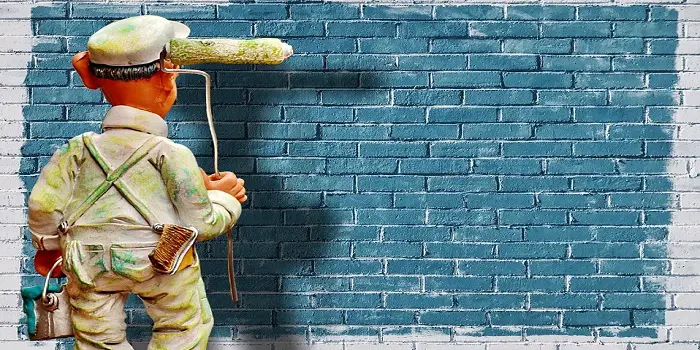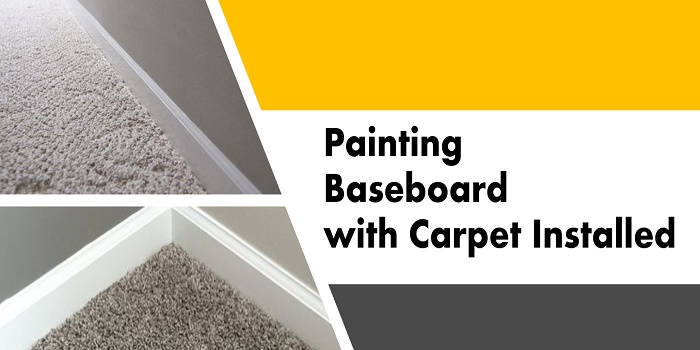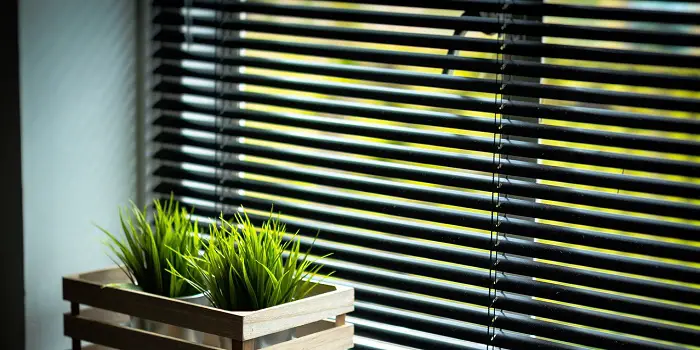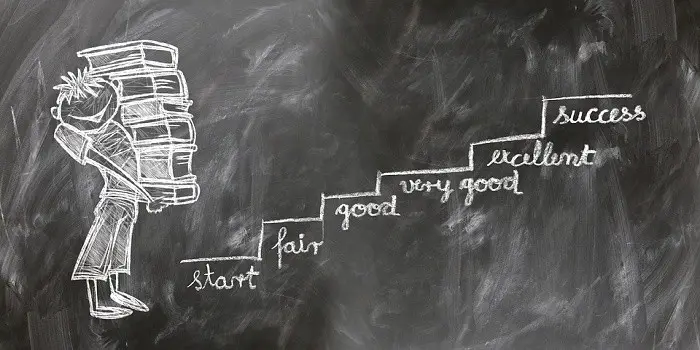
If you have chalkboard paint (also called blackboard paint) you want to remove from your walls, different methods can make that simple.
Depending on the painted surface, you can either use a heat gun to soften the paint, scrape it off using sandpaper, use chemical strippers or repaint over it to create a fresh look.
If you are removing the chalkboard paint from glass, for example, applying heat should not be your preferred option as it can damage the glass surface.
However, removing the paint from walls or wood surfaces shouldn’t be as tricky as you can do it easily by using heat or other methods.
Before we get into exact steps for different surface types, let’s understand what the blackboard paint is and why you may need to clean the blackboard paint.
What's Here in the Article:
What is Chalkboard Paint?
Chalkboard paint is a kind of highly durable paint that offers you a matt black finish.
Its often made by mixing various compounds like talc, acrylic, opacifiers, silica, titanium dioxide, carbon black, esters and water.
You can apply this paint to any smooth, non-porous surface that includes wood, plaster, drywall, glass, or metal.
When planning to work with chalkboard paints keep in mind that these are not the same as chalk paint.
Although both of them sound similar, they are very different things.
While chalkboard paint is used on surfaces to turn them into a writing board (writable surface you can actually write on), chalk paint is a type of decorative paint that can help you create a distressed look on your furniture.
Why DIYers Love Using Chalkboard Paint?
Blackboard paint is versatile and helps you go creative in various ways.
Unbelievably, you can even use a specialty magnetic primer and paint to create a smart magnetic blackboard surface.
This will allow you to stick the objects or your documents onto the magnetic surface with a magnet.
A few places where you can utilize this kind of chalkboard paint are…
1- Creative Outlet
Both parents and schools have set aside small areas with blackboard paint to help foster creativity in children.
You have a reusable surface that can allow children to create images with chalk, erase, and create again. You can also preserve their work by taking photos of it.
2- Family Events
What is happening this week can be posted on the blackboard-painted wall.
From doctor’s appointments to family nights to shopping lists and more, this is a great way to keep the entire family informed of what is happening.
3- Menu
If you run a restaurant, blackboard paint is a great way to post daily specials, favorite items, or perhaps a dish you want your customers to try.
Perfect for eateries, cafés, and bars, the look of the blackboard paint is quite retro yet also quite practical.
Plus, you can use it for several years without having to renew or repaint the walls.
4- Notices
For businesses, blackboard paint makes it easy for managers and employees to post notices. All you need is the chalk.
From team events to signing up for new projects to sharing important dates and even providing feedback, blackboard paint makes for a useful way to post notices.
5- Stop Graffiti
One of the more interesting methods to stop graffiti in the bathrooms is to use blackboard paint.
It allows for doodling, which can be erased at the end of the day.
But what if you want to remove the blackboard-painted wall altogether?
Why and how should you do it? When is the right time to do so? Let’s check them…
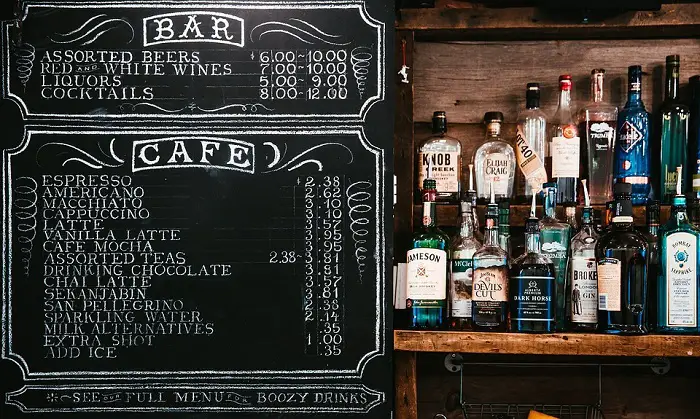
Why Remove the Blackboard Paint?
There are many practical reasons to remove blackboard paint.
IMO, one of the most common is when the children grow up and are no longer doodling on the walls.
Also, when the kids move out of the home, the need to post family notices becomes less important.
For businesses, removing the paint may become desirable when you are moving your offices.
The same is true for families looking to sell their homes. Let the new occupants decide if they want to add new blackboard paint.
By removing the old paint that isn’t waterproof and damaged, you make the home or office fresh and new again.
Now that you have decided the blackboard paint is no longer needed, here are the steps you need to take to remove it and refinish the surface.
4 Easy Steps to Remove the Chalkboard Wall
Before you start, you should know that getting rid of blackboard paint is not as easy as most other types of paint.
The color and thickness of the paint make it easy to clean but covering it up is another matter.
That is because since blackboard paint is usually black, it is easier to see even under several layers of paint.
You will want to use the following steps to ensure that the paint is fully washed, sanded, and covered.
Step 1- Wash
The first step is to fully clean the chalk and paint.
This means taking a wet cloth and wiping down the paint so that all traces of the chalk are gone.
In addition, any dirt, debris, or residue will be removed as well.
You may want to add a little soap, but plain water should do if all on the wall is chalk.
If required, you can use a solution of water and vinegar in the ratio of 1:1 for cleaning.
After letting the surface dry, step back and look at the entire surface to ensure that it is fully clean before going to the next step.
Step 2- Sand
To make the surface smooth so the new paint will stick, you will need to sand the blackboard paint.
You can sand by hand or use a sander.
If the paint seems to be tough, you can use a heat gun to soften the paint and then scrub using fine sandpaper.
Start by sanding one edge and working your way to the other side.
Pay attention to the edges as they are often left behind.
The result is that they can still be seen even when multiple coats of new paint are applied.
The sanding process will get rid of any bumps, divots, and other small imperfections on the surface while preparing the area for the new paint.
Step 3- Primer
Now you are ready to add primer to the area.
An oil-based primer should be thick enough to prevent whatever is left of the blackboard paint from coming through.
Although most primer is applied in a single coat, you may want to add another coat if you can still see traces of the old blackboard paint.
Simply paint one coat of primer, let it dry, and paint again if you can still see any remains of the old blackboard paint.
Step 4- Paint
Once the primer has been put into place, you are now ready to paint the wall.
As with the primer, you will want to start with one coat, let it dry, then add a second coat if needed.
Remember that you already have at least one coat of primer, so you may only need one coat of paint.
Be sure to let the first coat fully dry and examine it closely before deciding on whether a second coat is needed.
A little work and effort will help you get rid of any traces of your old blackboard paint.
It may take a few more coats of primer and paint, but it will be worth it.
How to Remove Chalkboard Paint from Wood?
Removing paint from wood is easy, and you have a few different ways to do it yourself.
I will discuss the steps for each of these methods below…
1- Using Heat Gun
Using a heat gun is the preferred method to remove paint off the wood surface without using chemicals.
The device is generally used to soften the old dried chalkboard paint so the paint can be easily removed from the wood.
- Start by pointing the heat gun about 2 inches away from the painted surface
- Move the gun back and forth so that the heat gets distributed across a section
- When you see paint bubbling off, use your other hand to scrape the paint with a scrapper
- When the paint is completely removed, use some denatured alcohol to rinse the area before you repaint
2- Using Sandpaper
Sandpaper, sanding sponge, sanding block, or an electric sander can be used for this method depending on the size of the surface you need to remove the chalkboard paint from.
Since the process will involve dust, you must wear a face mask and eyewear for protection.
- Start by cleaning the wood surface with dish soap and some water
- After the surface is dry, sand using coarse sandpaper to remove the paint
- Try to remove all the paint making sure you do not damage the wood during the process
- Switch to finer grain sandpaper to remove the paint that has been left behind
- Once all the paint from the wood is removed, use a damp cloth to wipe the dust from the surface
3- Using Paint Stripper
Paint & Varnish Stripping Gel such as Citristrip works great to remove dried latex paint, oil-based paint, chalkboard paint, varnish, lacquer, polyurethane, and shellac.
Since it contains no methylene chloride or NMP, it’s pretty safe to use for home projects.
Not only for stripping the paint off from wood surfaces but also it works for metals and masonry surfaces as well.
- Pour some paint stripper into a small container.
- Follow the guidelines provided by the manufacturer on the label to apply the stripper to the wood surface.
- Let the paint stripper sit on the surface for a specified time so that the paint gets softened.
- Now using a paint scraper tool, gently remove the softened paint while making sure you do not damage the wood.
- Paint that is too stubborn to remove may need an additional paint stripper. So reapply some chemicals and repeat the process.
How to Remove Chalkboard Paint from Glass Surface?
Removing chalkboard paint from glass can be tricky, but if you follow the steps patiently, you will get the job done without any problem.
- Start by filling a bucket with warm soapy water.
- Take a clean cotton cloth and dip it into the soap water
- Wipe over the glass window surface to remove any deposited dirt
- Wet the glass surface again with warm soap water
- Using a razor, spatula, or scrapper, gently scrape the paint; make sure the glass remains wet during this step to avoid scratches.
- Finally, using a clean rag, wipe the glass window.
- If required, repeat the scraping process until all the paint has been removed.
Final Thoughts
Chalkboard paint is versatile and can be applied on various surfaces, including walls, wood, and glass.
Of course, you may want to keep the blackboard paint or perhaps renew it as it has several uses.
But there are instances when you want the paint to remove and repainted for a fresh look.
By following the above steps, you can get the paint stripping job done without any trouble.
Share the post "How to Remove Chalkboard Paint (From Wall, Wood, Glass…)"

Douglas Becker (aka Painter Doug) has over twenty years of experience as a painter in Adkins, Texas. At present, he resides in Florida with his family.
From painting multi-storeyed houses, condos, and apartments to large commercial buildings and small offices, he had served various customers in areas not only in Adkins but also in Southwest Florida, Sarasota, Naples, and many more. To know more about him check here.

